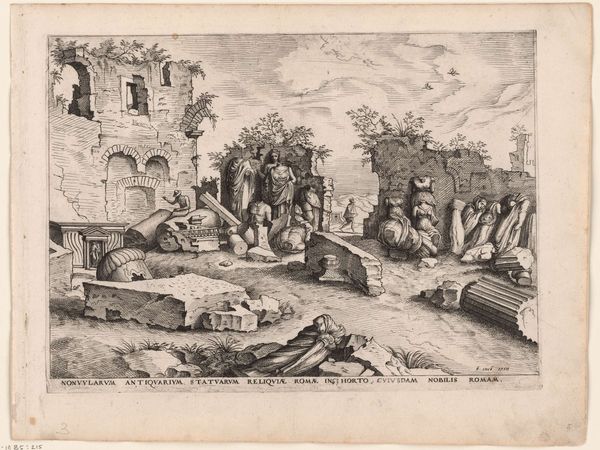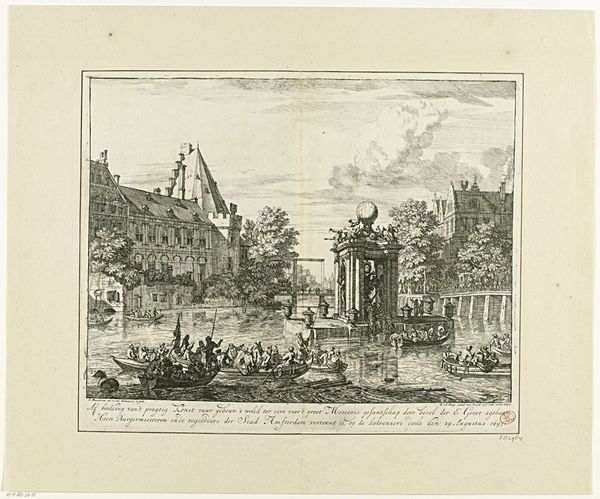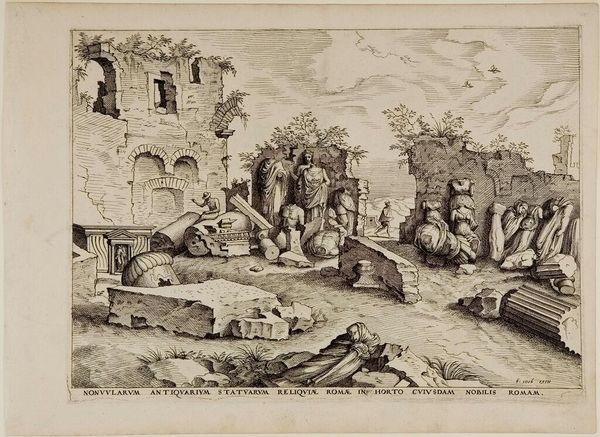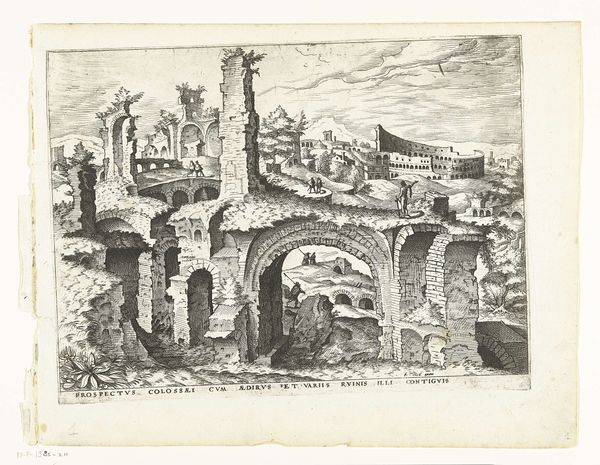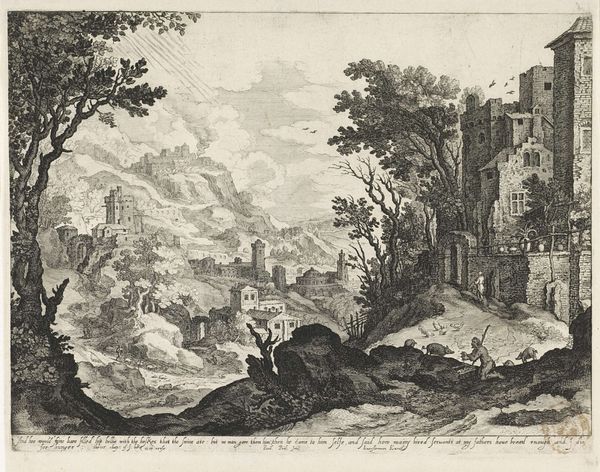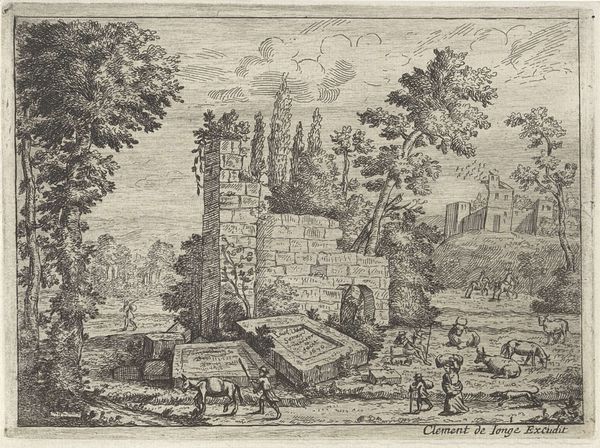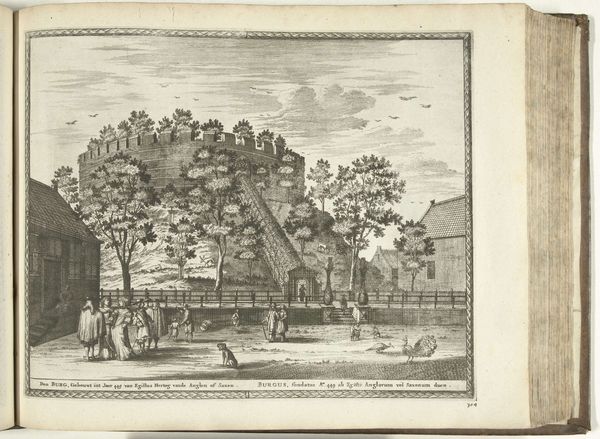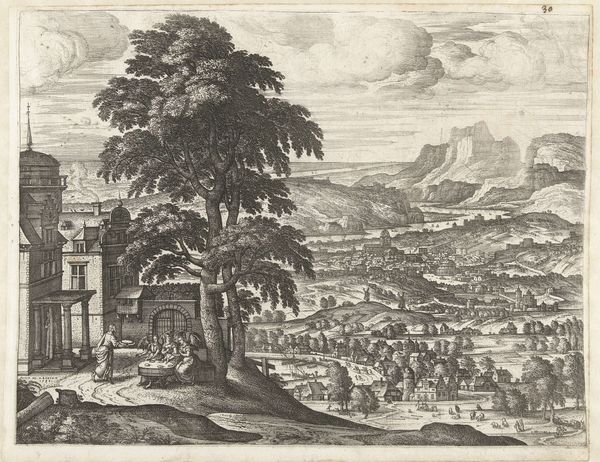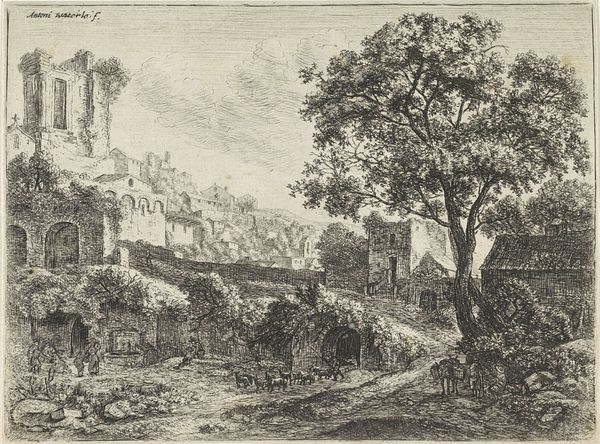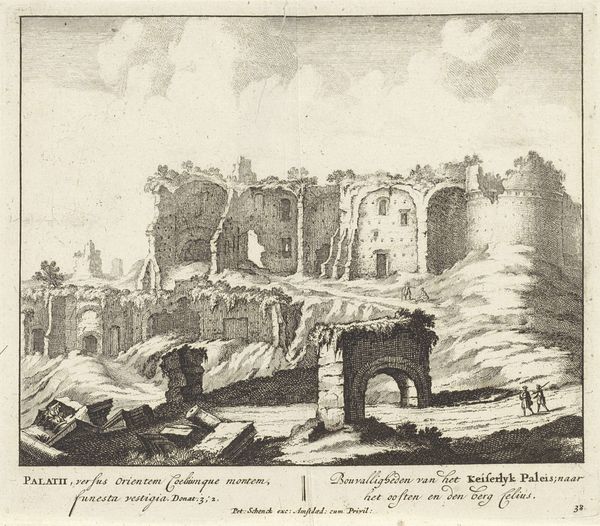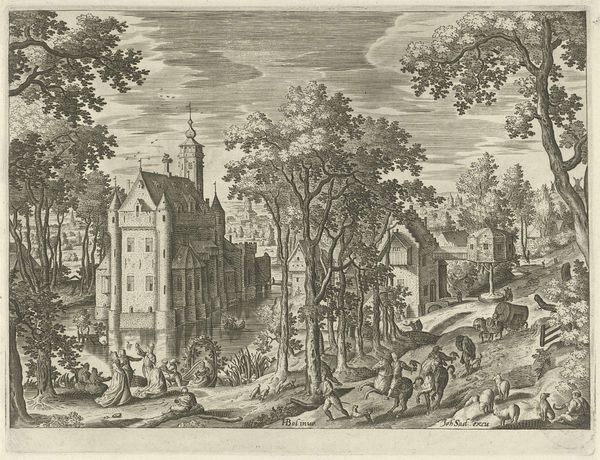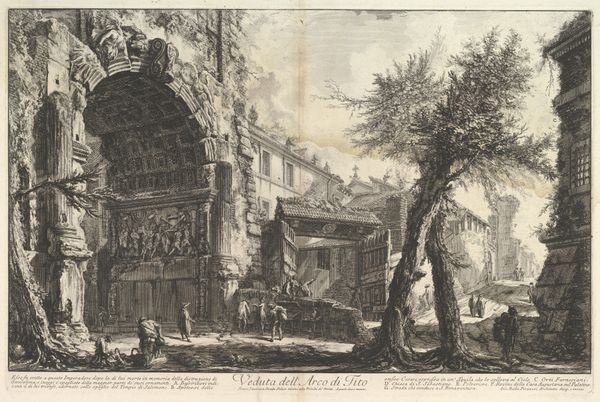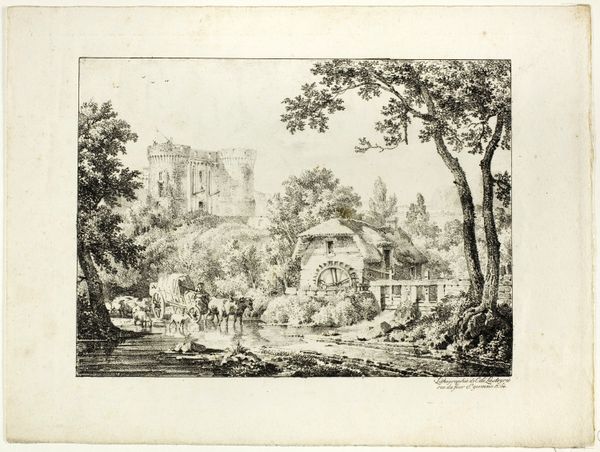
print, etching, engraving
# print
#
etching
#
old engraving style
#
etching
#
cityscape
#
history-painting
#
italian-renaissance
#
engraving
Dimensions: height 251 mm, width 321 mm
Copyright: Rijks Museum: Open Domain
Curator: It is my pleasure to introduce you to Daniël Vrijdag’s 1799 etching, "Gezicht op het Forum Romanum te Rome," housed here at the Rijksmuseum. Editor: What strikes me immediately is this simultaneous sense of grandeur and decay. It’s as if Rome itself is a symbol caught between past glory and present ruin. The sharp, detailed lines really enhance that contrast. Curator: Absolutely. Vrijdag, working within a well-established tradition of vedute, or view paintings, wasn't simply documenting the Forum; he was participating in a visual dialogue about history, power, and the transience of empires. The inclusion of both standing monuments and crumbled ruins is very deliberate. Editor: The Forum is presented as this sort of open-air museum even then, a space for reflection on the arc of civilization. I wonder how the print was intended to be received by audiences at the time. Did they view it as a celebration of Roman achievement, a lament for its decline, or both? Curator: It’s fascinating to consider. Prints like this circulated widely, shaping perceptions of Rome among those who couldn't visit. They spoke to a fascination with classical antiquity that permeated 18th-century European culture, and that is strongly aligned with Italian Renaissance's visual expressions. For many, Rome was both a real place and an idea, a touchstone for artistic and political ideals. Editor: Looking closer, you see the almost diagrammatic style the artist chose in depicting these forms, with this intense linear clarity, so removed from any real experience of the embodied encounter within this place. I suppose, the choice reinforces that message about Rome, a metaphor more than a place. Curator: Precisely. Even the medium itself—etching and engraving—speaks to that, doesn’t it? The linear precision, the reproducible nature, allowed for a kind of standardized vision of Rome to proliferate. Editor: Looking at it now, the artwork serves almost as a memento mori, an artifact that provokes reflection upon the symbolic passage of civilizations across time, their collapses, and rebirths in a cultural memory. It also speaks to the cultural dynamics of the period in which it was produced, showing the visual dialogue between tradition and the need to record new discoveries. Curator: It seems that we may have stumbled into different perspectives through this fascinating analysis, reminding us that historical pieces can be seen with very contemporary interpretations. Editor: That is what I like about the visual dialogues with the artwork—I hope we all walked away with a new idea today.
Comments
No comments
Be the first to comment and join the conversation on the ultimate creative platform.
